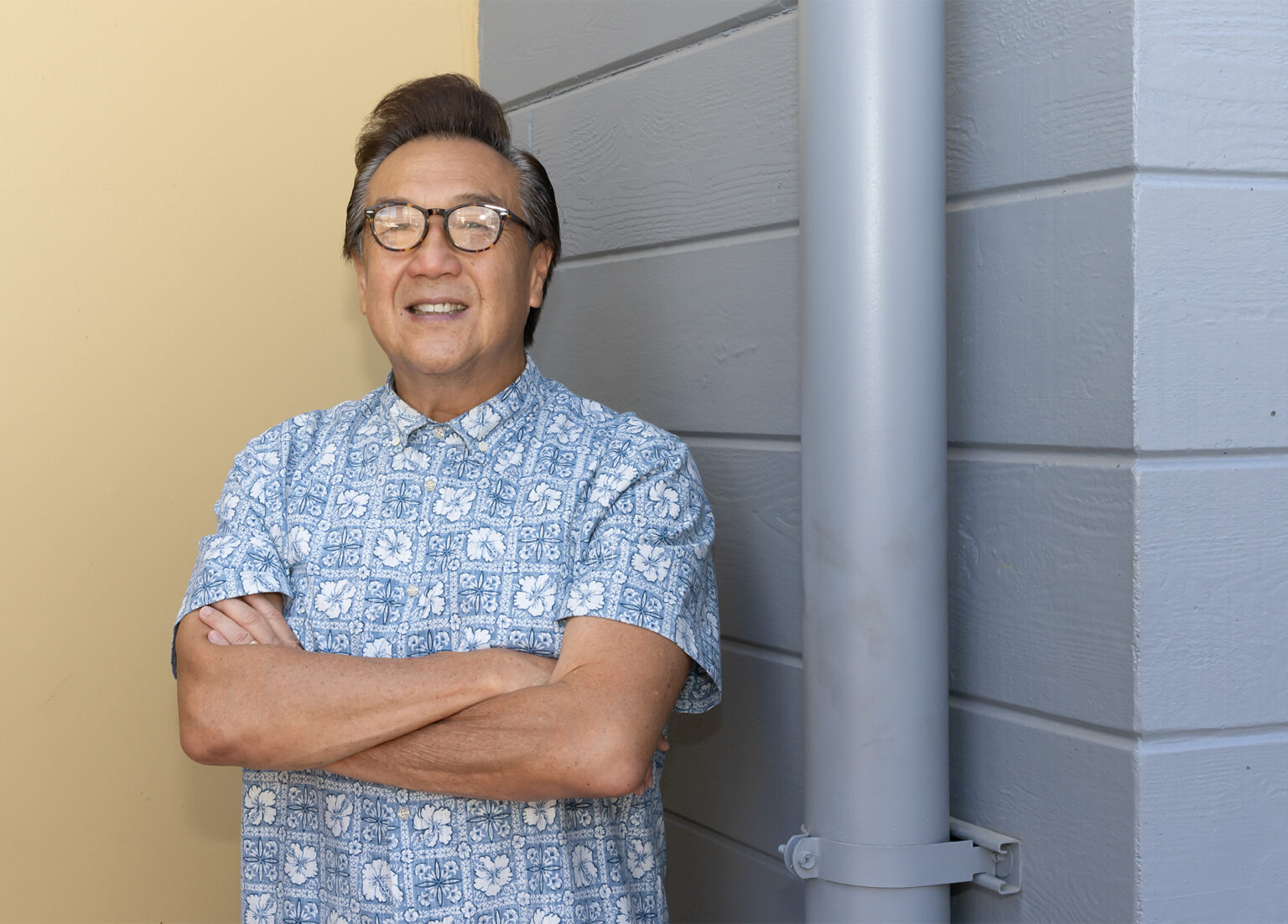The demand for housing in Hawai‘i is far greater than what is currently available. The scarcity of housing is further hindered by the high costs of construction, the high cost of living, onerous regulations, logistical backlogs and permitting delays.
And when housing is built, it too often prices out local residents, becoming attainable only to a select few.
The situation isn’t new — calls for rapid construction of housing, specifically affordable housing, have plagued news headlines, political discourse and residents’ bank accounts for decades.
INCENTIVIZING NEW BUILDS
To streamline the process of building affordable housing, the City and County of Honolulu has introduced a number of incentives to developers and landowners over the last several years, including Ordinance 18-1 (Bill 59) introduced in 2017, and Ordinance 21-12 (Bill 1) in 2021. The former provides fee waivers and tax reductions, with the latter offering cash grants, provided certain requirements are met.
Ordinance 19-8 — more commonly known as Bill 7 — was introduced by then-Councilmember Kymberly Pine, and signed into law by then-Mayor Kirk Caldwell. Among its provisions, Bill 7 allows for greater building density on a property and the easing of other regulations, while providing tax exemptions and other incentives for developers, stirring some initial controversy. The stated goal of the bill was to encourage the construction of thousands of new affordable rentals in a relatively short period of time.
Though intended as a five-year pilot program, slow adoption largely due to the pandemic among other concerns led the City Council and Mayor Rick Blangiardi to extend the program until 2030.
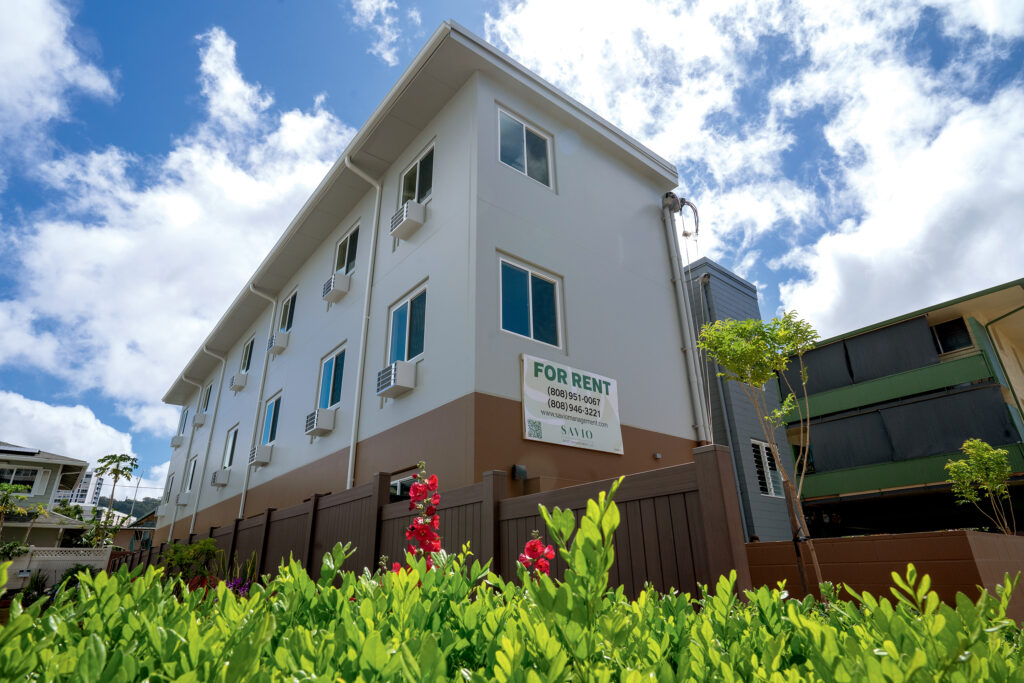
PAUL LAM ENTERS THE FRAY
The first project developer to utilize Bill 7 was Puuhue Apartments LLC, a walk-up on Puuhue Place, near School Street and Kuakini Medical Center, providing 25 affordable rental units in Honolulu’s urban core.
Lam Capital LLC is another developer that has seized the opportunity to make the most of Bill 7 to generate much-needed housing. The first of its projects was at 1427 Ernest St., which broke ground in December 2022 and was completed nine months later.
The Ernest Street property provides 26 units of affordable housing — 24 studio units and two one-bedroom units — in a residential neighborhood already zoned for multi-family dwellings. Another Lam Capital project at 1226 Kinau St. recently opened its doors to residents, with its 25 units completed in just eight months.
“We stacked this building in 30 days,” says Paul Lam, principal at Lam Capital LLC, of his Kinau Street project. While already considered speedy by Hawai‘i standards, Lam says his project teams are still finding ways to improve, saying that they’re “about 80 percent” there when it comes to overall operational efficiency.
The response to developments at 1427 Ernest St. and 1226 Kinau St. is overwhelmingly positive, with the Kinau property receiving over 500 inquiries via phone and email from interested tenants even before the building received a certificate of occupancy from the City & County of Honolulu’s Department of Planning and Permitting, according to Lam.
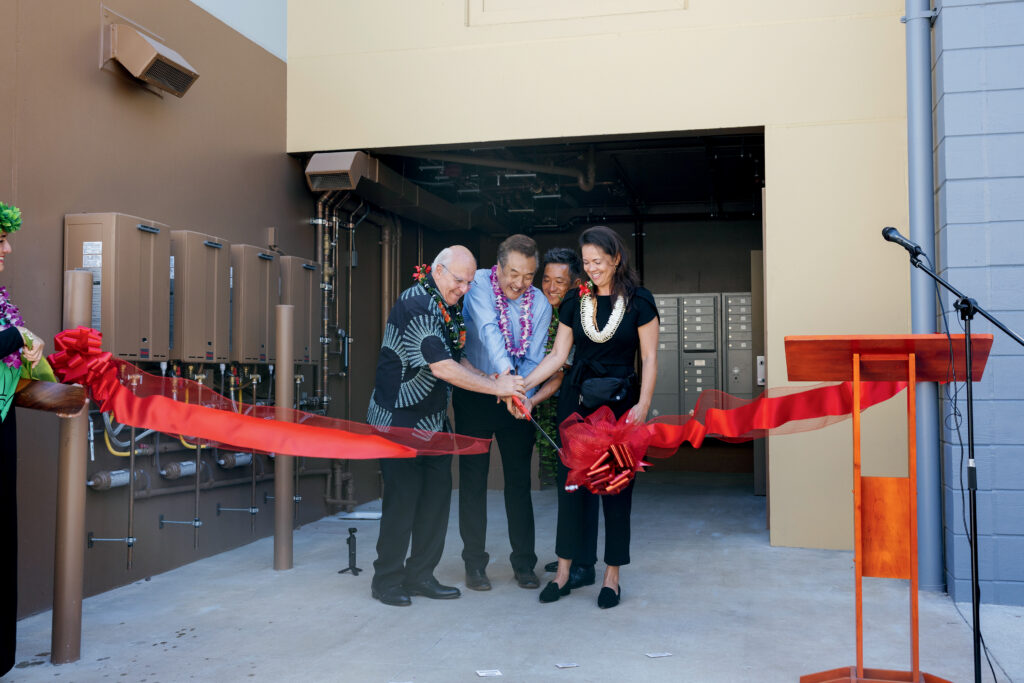
ENRICHING LIVES
Lam calls himself a “Bill 7 specialist.” With a professional background in the performing arts, he isn’t a developer in the traditional sense. When speaking to Lam, it becomes clear his interest in developing affordable housing has a different origin. He’s sincere in his willingness to help others and improve the community at large.
“I’ve been incredibly fortunate,” says Lam. “I want to not just build buildings, I want to build lives and enrich lives.”
Lam’s humble beginnings became the catalyst for his current activities, he continues.
“I was an immigrant. 1966, Nov.16, I landed in America — Hayward, California,” says Lam, who lived in a two-bedroom, 600-square-foot home that at the time cost his family around $400-$500 per month. “That gave me a great start, so I know the value of a roof over your head and … what that does for an individual and what that does for a family, and being able to go out and … make a living, or try to make a living, and then to recoup and recharge and to be able to take steps towards growth.
“I think a lot of the societal ills can be cured by more housing for our community. We have, what, about 5,000 homeless here in Hawai‘i? I’m anxious to see those numbers come down.”
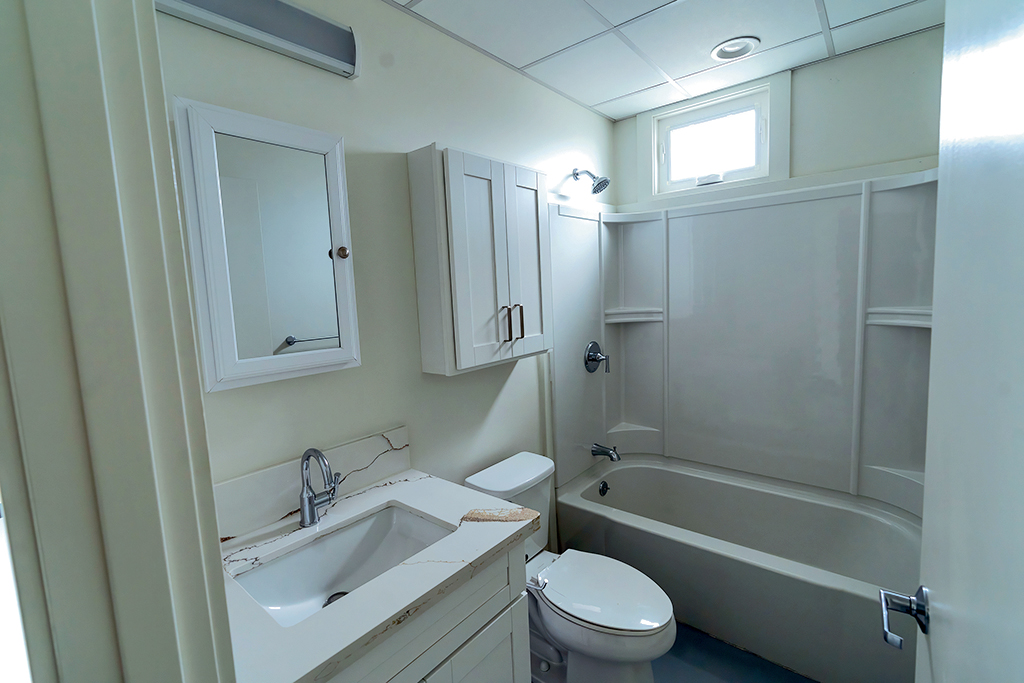
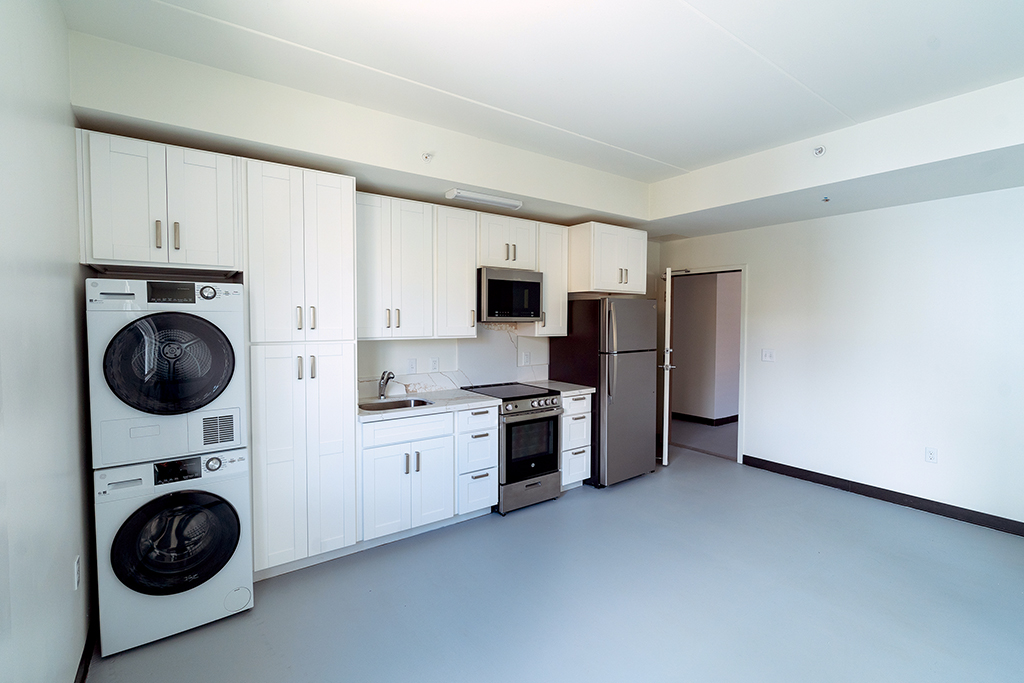
CHAMPIONING THE CAUSE
Lam and his wife have lived in Hawai‘i for over two decades.
“I came [to Hawai‘i] to retire,” he says.
It was during the COVID-19 pandemic that Lam decided he had not only the desire, but also the means to help solve Hawai‘i’s housing crisis by acquiring properties — but he encountered challenges trying to put his ideas into action.
Then in 2022, Lam crossed paths with Honolulu Mayor Rick Blangiardi while leaving an event. Seeing his opportunity, he ran to catch up to the mayor and literally gave him an elevator pitch.
“‘Mr. Mayor,’ I said, ‘I’m sincere about affordable housing [and] I need some help,’” he says of his 40-second presentation.
It worked.
The mayor urged Lam to write a letter detailing what his issues were, and Lam obliged. Soon after, he was invited to the mayor’s office for another conversation.
When Lam arrived, he saw his letter on the mayor’s desk with pages marked-up with a yellow highlighter. The letter was obviously well-read and scrutinized, a cue for Lam that the mayor had really given his letter some thought.
At this moment, Lam says he saw Mayor Blangiardi as not just a politician giving lip service, but rather as someone who was serious about his intentions to do something about the housing crisis.
“I need to give [Mayor Blandiardi] credit, you know, he’s a true coach, inspiring,” says Lam. “And he follows through.”
Lam calls Mayor Blangiardi and his administration a “true champion” for the cause of affordable housing.
“Mayor Blangiardi, Managing Director [Michael] Formby and DPP Director [Dawn Takeuchi] Apuna have been very supportive of Bill 7 affordable housing projects,” says Lam. “We’re making progress on affordable housing. And thanks to our mayor, and … the governor. They all support my projects. They all believe my focus and philosophy on affordable housing is sound. I’m delighted to have their unwavering support.”
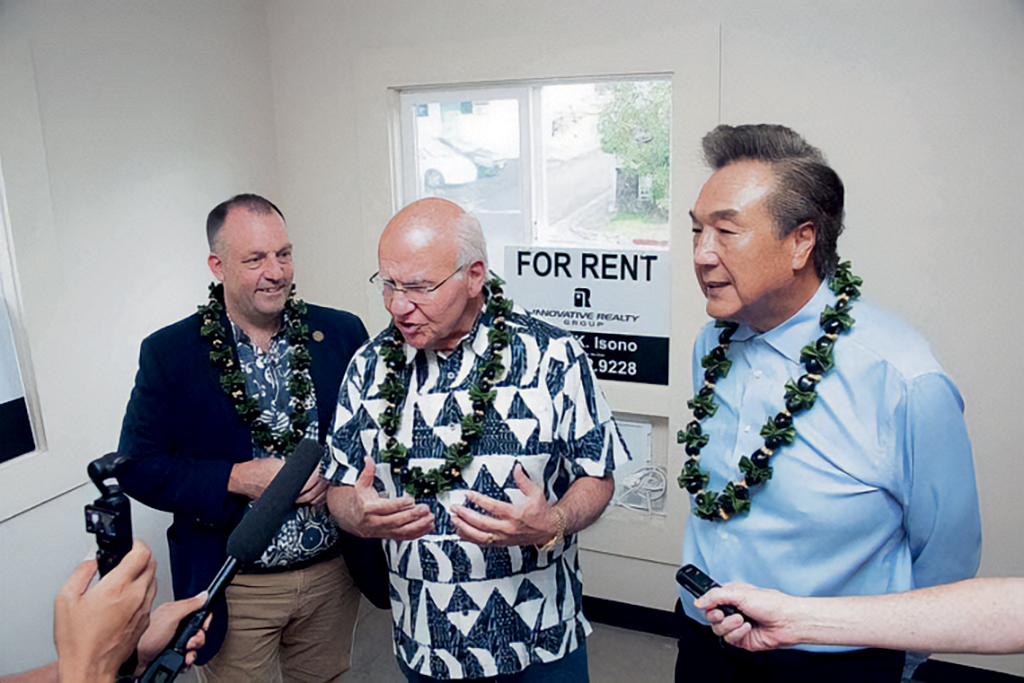
MORE HOUSING
Lam recently broke ground on property along Algaroba Street in Mō‘ili‘ili and another parcel on Pensacola Street.
“We can’t build them fast enough,” says Lam. “Algaroba is going to be a 25-unit complex: 16 studios, nine one-bedrooms.
“The project on Pensacola is going to be more workforce housing. They’re going to be eight one-bedrooms and 10 two-bedrooms. And we’re going to have about 33 parking spaces for that. It’s going to be more for workforce housing, but it’s in a great location [with ] bus stops on both Wilder and Pensacola right in front of the building. So we see that as a great workforce housing project.”
Lam also has plans for projects on Piikoi Street, University Avenue, Alapai Street and at least three other parcels in the Makiki and Mō‘ili‘ili areas.
“We hope to have — next year — multiple starts, maybe five project starts next year,” he says.
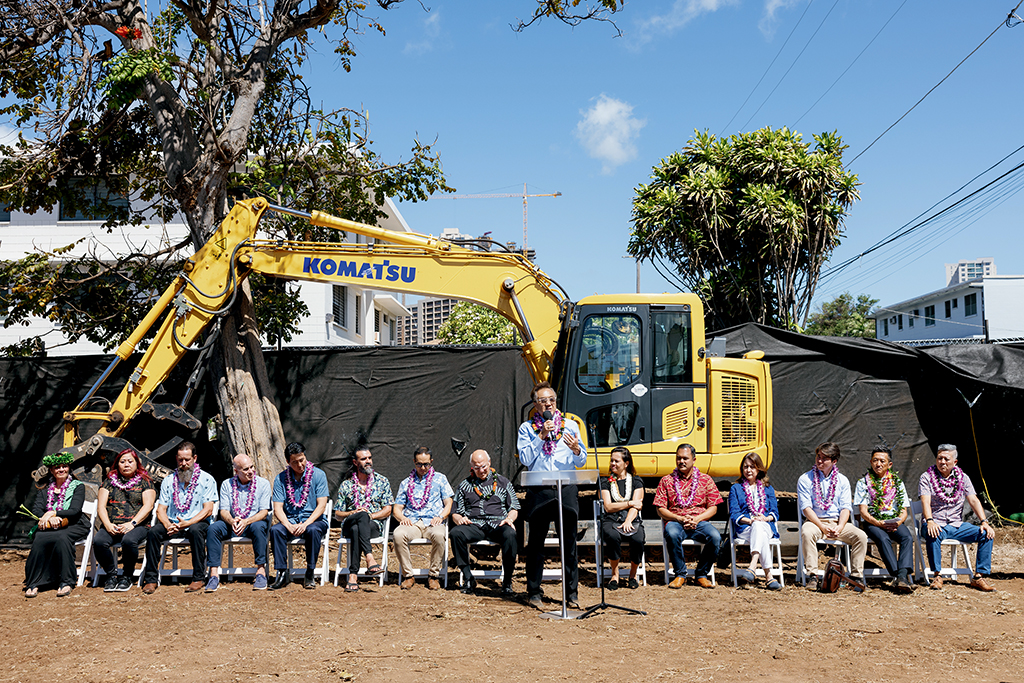
IN IT TOGETHER
Puuhue Apartments opened to residents in 2022 while PenseMetro nears completion of another Bill 7 project, a 29-unit building on the corner of Pensacola and Lunalilo streets. Bill 7’s reach can also be felt outside of metro Honolulu, with 36 units recently built on Olive Street in Wahiawā.
If PenseMetro and other developers alongside Paul Lam and Lam Capital continue to build affordable housing, then Bill 7 and other legislative initiatives to boost the production of housing can be said to be a success. Whether the city will meet its goal of developing “at least 500 new affordable rental housing units per year” remains to be seen, but the affordable housing push of recent years has generated positive results.
Lam, however, sees housing as everyone’s kuleana and not just the charge of a handful of developers and politicians.
“Through our words and actions, I hope to inspire concerned citizens, landowners, developers, contractors, investors and bankers in our community to engage in the affordable housing movement, supported by the government,” says Lam. “The homes we see today were largely built by our parents and grandparents. Now, it is our responsibility to build for our children and future generations.
“We must encourage those who come after us to take up the vital work of ensuring affordable housing for all.”

